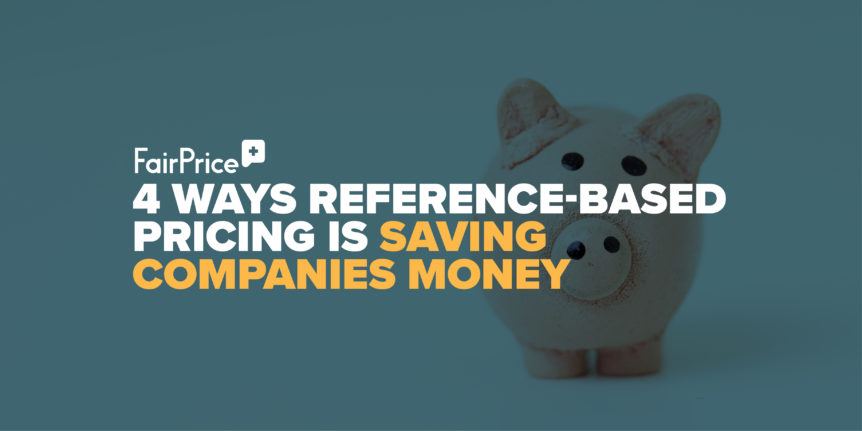RBP Benefit 6: 4 Ways RBP is Saving Companies Money
Traditional health insurance policies’ premiums continue to increase year after year, but reference-based pricing offers an antidote to ever-rising health coverage costs. By fundamentally changing how healthcare costs are determined and paid, reference-based pricing promises to drive down expenses over time. This will benefit employers and employees, who together share the costs of health coverage. Human resources representatives who are instrumental in the transition also stand to benefit.
Want to save 30% on your healthcare?
Download our brochure to see:
How American insurance is broken
Who FairPrice Is
How we can help
(This is the sixth installment in a seven-part series on how reference-based pricing benefits human resources representatives. While this installment focuses on long-term trends, Part 5 looked at the immediate financial benefit RBP plans can have.)
1. Reference-Based Pricing Provides Transparency
First and foremost, reference-based pricing provides greater transparency than traditional health insurance plans do. Providers who join RBP plans clearly state how much they charge for the medical services they provide, and all participating providers’ fees are typically listed in a plan database.
Employees are given access to the database, so they can see how much their medical care will cost before they have procedures done. The database also serves as a region-wide resource on the average cost of various medical procedures.
With this level of transparency, medical providers aren’t able to charge above-market rates. It becomes clear whether any providers are charging too much, and employees can easily choose a different participating provider whose fees are in line with the regional rates.
2. Reference-Based Pricing Brings Market Competition
As providers’ fees are shared, employees are able to compare what different providers charge. This introduces competition into the healthcare field. This is something that has long been lacking, thanks to traditional health insurance’s opaque billing practices. Furthermore, it’s made the secretive world of health cost discounting, which takes place between health insurance companies and healthcare providers, worse.
Introducing competition among providers will provide financial benefits for employees who need medical care. As providers are forced to competitively price their services, the market will push healthcare costs lower. It’s possible that reference-based pricing competition not only slows the increase in medical costs — but can reverse the upward trend.
3. Reference-Based Pricing Will Become Increasingly Powerful
Reference-based pricing is still a growing health coverage model. As it’s adopted by more and more employers, it’s ability to provide transparency and competition will only become greater. In the coming years, RBP may become one of the most powerful forces in the health coverage industry.
4. Human Resources Representatives Are on the Forefront of RBP
Reference-based pricing is an industry-wide revolution and, as such, involves many different groups. One of the groups that’s playing a pivotal role right now are human resources representatives. Often overlooked in favor of other players in the health coverage space, HR representatives are the people currently helping their companies understand the benefits of RBP. In doing so, they’re simply doing their job — being resources who help their employers care for their employees.
If you’re in human resources and would like to learn more about how reference-based pricing could help your particular company, contact us at FairPrice. We’d love to learn more about your company and share how RBP might help in more detail.


